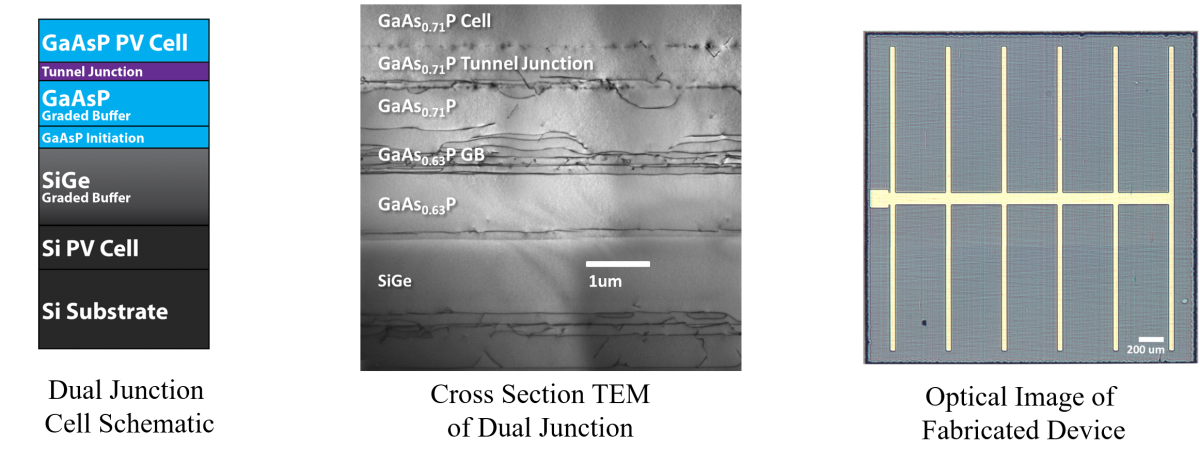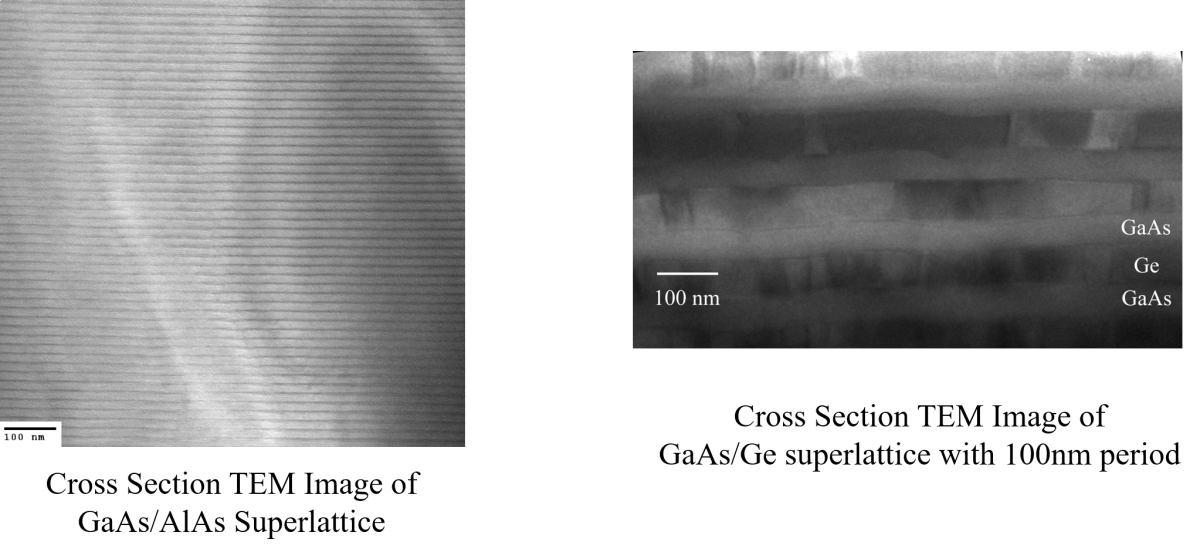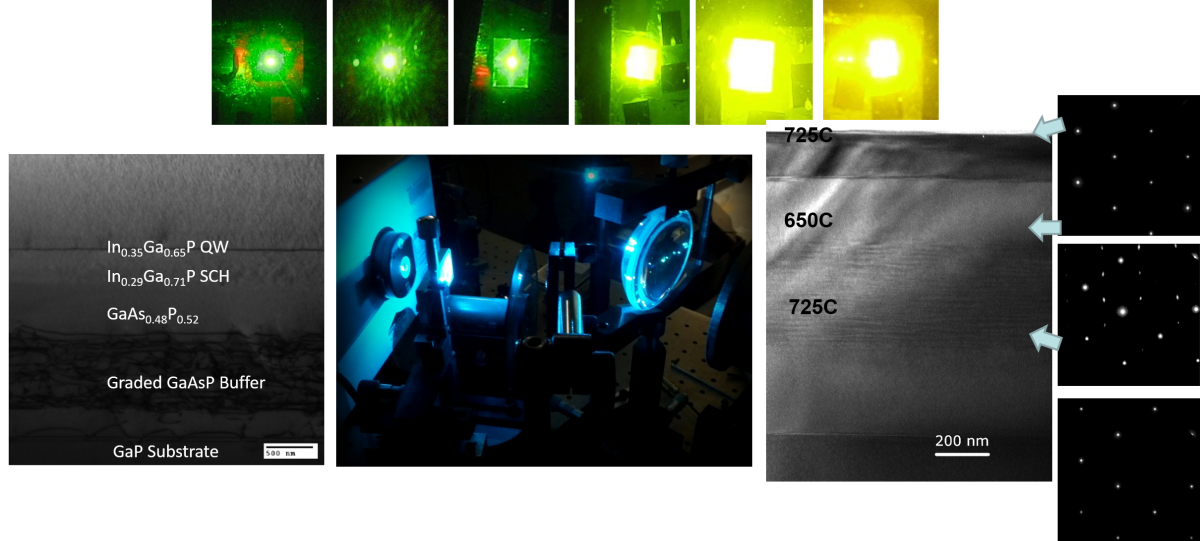Substrate EngineeringWe are working on creating a tandem photovoltaic device using silicon as both the substrate and lower cell and GaAsP as the upper cell. The ideal band gaps for this two cell tandem structure with silicon at 1.1eV and GaAsP at 1.75 eV allows access to the highest efficiency possible for a two cell tandem, 36.5%. Though GaP is lattice matched to Si, defect-free heteroepitaxy has nevertheless been a major challenge. We have successfully integrated GaAsyP1-y on Si1-xGex virtual substrates with x = 50%, 60%, 70% and achieved device quality TDD of low 1e6 cm-2. |
 |
Photovoltaics and ThermoelectricsAs a part of the Solid State Solar Thermal Energy Conversion (S3TEC) Center, we are creating III-V semiconductor devices for thermophotovoltaic (TPV) and thermoelectric (TE) applications. For the TPV devices we are using a tandem solar cell design and targeting band gaps in the 0.6 eV to 0.8 eV spectrum. By using graded buffers and different semiconductor alloys we can grow high quality lattice matched active layers in these devices. State of the art TE suffer from poor figures of merit (efficiency), ZT, but large improvements may be possible though band structure engineering. We are targeting superlattice (SL) films to reduce the thermal conductivity while increasing the thermopower (S2σ) of these devices. |
 |
Novel Electronic DevicesWe are developing low power transistors that switch with millivolts instead of volts in order to create electronics that can run at higher clockspeeds and consume less power. We are growing and fabricating density of tunnel transistors that utilize quantum tunnelling to achieve a sharp turn-on with very little voltage. Our unique MOCVD allows us to explore the use of both III-V materials (GaSb, InAs, etc), and group IV materials (Si, Ge) for these devices. This project is part of the Center for Energy Efficient Electronics Science (E3S). |
 |
Semiconductor LEDs and LasersWe have developed novel lattice mismatched GaInP and AlInP alloys that luminesce in the yellow-green part of the visible spectrum (560nm - 580nm). Investigations into its crystal structure, electronic and optical properties are ongoing to fabricate heterostructures for LEDs and diode lasers. Applications include high quality white LEDs for solid state lighting and brilliant four color (RGBY) displays. |
 |
